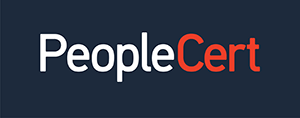We're open through the holidays to support your upskilling goals — book your session today!
We're open through the holidays to support your upskilling goals — book your session today!
Unable to find what you're searching for?
We're here to help you find itmin.pngL.jpg)
Cloud computing is one of the hottest buzzwords in the IT industry today. Its applications have expanded to almost every industry and domain in the world. Cloud computing involves running various workloads in an abstract, shared and scalable IT environment known as the cloud environment.
Traditional and legacy businesses relied on physical on-premise infrastructure and IT systems. However, this incurred huge costs in terms of maintenance costs, personnel charges and other costs for replacement, management and updating of all the components. Cloud computing eliminates the need for massive physical infrastructure by outsourcing it to a third party. Thus, companies can focus on their core offerings. There are various types of cloud computing and each of them serves a different function from the others.
Cloud service providers offer several types of application development services for businesses to use. For building cloud-native app platforms, cloud professionals need to go through several different choices to identify the most relevant services and the best way they can work together. With Red Hat cloud services, these complexities can be eliminated by approaching application building through a unified platform.
The demand for professionals skilled in the use of different types of cloud computing in Red Hat has increased significantly in the past few years. Red Hat Cloud services provide a consistent and streamlined user experience across multiple cloud services combined. Application-building teams can natively integrate with any leading cloud hyperscaler. Through its OpenShift Application Services, Red Hat ensures consistency in app building for applications that have native integration with OpenShift.
A developer is the main support and innovation driver for any business organisation. Red Hat always prioritises delivering a smooth and streamlined experience for the developer from the design stage to the production stage. Some of the developer-centric features provided by Red Hat Cloud Services are:
Today, AI and ML (Artificial Intelligence and Machine Learning) are critical for companies that are building applications to convert data into insights to create business value. With its OpenShift Data Science function, Red Hat can perform complex AI/ML modelling that accelerates intelligent application delivery. Red Hat OpenShift Data Science allows application developers to integrate models that are container-ready into smart apps easier and faster. Red Hat Cloud Services allows developers and data scientists to rapidly develop, test, iterate and test Machine Learning models.
Downloading and installing Apache Kafta or Kubernetes is not particularly challenging while trying to create a productive environment for software development. However, preparing these services for production can take large amounts of effort and time. However, this is taken care of when you use Red Hat Cloud Services to help you develop and deliver applications on time.
In this scenario, Red Hat is responsible for the app and platform infrastructure and ensures business services are always on and available. Red Hat provides an SLA or service-level agreement for all managed services 99.95% of the time. All the relevant services are always updated, upgraded and secure so that developers can focus on innovation. Red Hat Cloud Services come with enterprise-grade technical support, premium support and Kubernetes’ supportive community.
All developers and cloud users need the freedom to combine cloud services and providers in a way that suits them best or they will be stuck in a single provider’s stack. Red Hat Cloud Services are cloud-agnostic, meaning you have the freedom to use several cloud services in a combination you choose based on your needs without affecting a consistent and smooth developer-first cloud experience for all private and public cloud environments.
You May Also Like: A Complete Guide To Red Hat Certification Career Path
Cloud computing can be divided into four key categories. These are:
Businesses choose different types of clouds and cloud services based on their unique requirements. No two cloud services are the same and don’t work towards solving the same problem in two different places. There are several similarities and differences between them which can help you make the right choice based on your unique requirements.
A public cloud is a cloud environment that is usually created with IT infrastructure that the end user does not own. Amazon Web Services ( AWS ), Microsoft Azure, Alibaba Cloud, Google Cloud Platform (GCP) and IBM Cloud are among the leading public cloud providers in the world.
A traditional public cloud always functioned off-premises. Today, public cloud service providers provide cloud services based on the on-premise data centres of clients.
Every cloud can be a public cloud when the environment gets redistributed in parts to several tenants. The fee charged is not necessarily a defining public cloud characteristic anymore as some providers allow free public cloud services for users. The physical IT and cloud infrastructure that public cloud providers use can also be developed into a cloud platform that functions like a PaaS service or can be abstracted to be used as an IaaS service.
A private cloud is a cloud environment that is focused solely on a single user or group of users. Its usage is restricted and thus it remains behind the firewall of the user or group of users. Every cloud can become a private cloud when the concealed IT infrastructure focuses on providing isolated or restricted access to selected individuals or groups.
However, with the evolution in cloud computing technology, a private cloud no longer needs to be sourced from a single on-premise IT infrastructure. Enterprises today are creating private clouds by renting vendor-owned data centres located off-premise. This eliminates any restrictions based on ownership or geography.
A hybrid cloud environment is a more singular IT environment that is built from several environments working together through a LAN, WAN, VPN or API, or any combination of these networks. Hybrid clouds have complex characteristics and come with varying requirements based on the provider businesses look at. This could mean:
However, any IT system can become a hybrid cloud when the application can move freely between multiple individual cloud environments connected to each other. Some of these cloud environments can also be sourced from collective IT resources with on-demand scaling. Plus, all these environments can function as a unified environment through an integrated orchestration and management platform.
ALSO READ: Top Red Hat Linux System Administrator Interview Questions
Multicloud is an approach to cloud computing that uses multiple cloud services from multiple vendors si. Every hybrid cloud is a multicloud but not every multicloud is a hybrid cloud. A Multicloud becomes hybrid when several cloud platforms or services are integrated or orchestrated to work together.
Multicloud environments could exist either for a purpose or could get created accidentally due to shadow IT operations. No matter the reason, having a multicloud environment has become increasingly common across organisations looking to improve their performance and data security by expanding their portfolio of cloud environments.
IaaS is short for Infrastructure-as-a-service. It refers to how cloud service providers manage any infrastructure for users, including the servers, virtualisation, data storage and networks using an internet connection. A user gets access to the data and networks through a dashboard or API and pretty much rents the cloud infrastructure. You can focus on managing apps, operating systems and middleware because the service provider focuses on all networking, data storage, servers, hard drives and hardware. They also help take care of repairs, hardware issues and outages.
Additional Read: Red Hat Certified System Administrator (RHCSA): A Complete Guide
PaaS is short for Platform-as-a-service. It refers to how software platforms and the hardware get managed by the cloud service provider while you as a user are responsible only for the applications that run on the platform as well as the data these apps require. PaaS is mostly targeted to programmers and developers and provides users with a shared platform to build and manage applications, a fundamental component within DevOps.
SaaS is short for Software-as-a-service. It refers to a cloud computing service designed to deliver software applications to the end users. The cloud service provider manages this application. You don’t need to worry about bug fixes, updates and software maintenance as the cloud service provider takes care of all of them.
Red Hat provides an open hybrid cloud strategy along with open-source technologies for support. This ensures a consistent foundation for all cloud deployment models - public, private and hybrid. The key offerings include a standardised OS working in nearly any environment consistently, container platforms that package and move cloud-native applications from one cloud to another and various tools to automate and manage these tasks and operations. This ensures you get the portability required for successful cloud deployment and implementation. To get certified and learn more, enrol in a training course on Koenig today.

Devpriyam is a Microsoft Certified Trainer with rich experience in Database Administration, System Administration, Oracle Applications, Troubleshooting, and Backup & Recovery concepts. I deliver training on various Database Systems Management tools.










